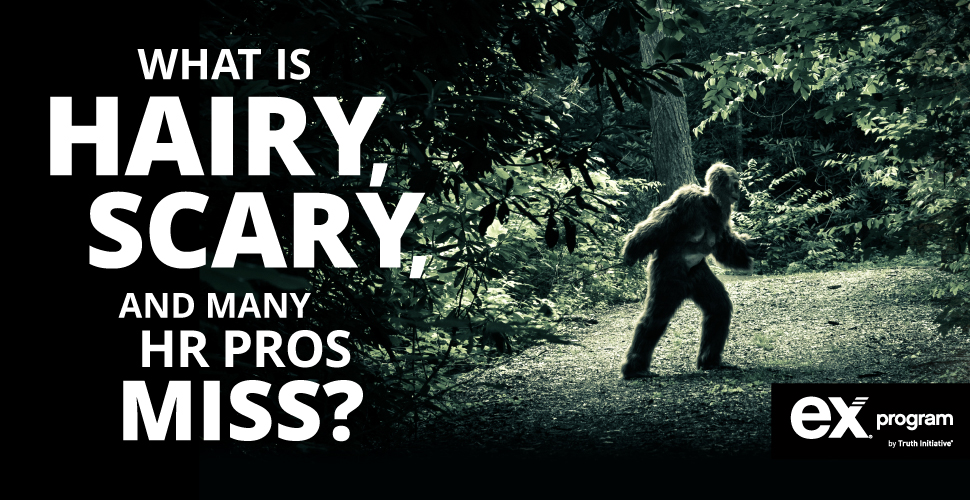When it comes to mythological creatures, Bigfoot may not get as much attention as unicorns and dragons, but there’s one enormous reason you should learn about him.
He works for you.
You don’t actually employ Bigfoot, but considering how much he has in common with tobacco users in your organization, it’s a bit scary. Need some proof? Read on:
Same But Different
Yes, these 2 things have a lot in common, but 1 key difference is tobacco use in the workplace is not a myth; it’s a very real monster eroding your employee health right now.
So, commit to address employee tobacco use now. Don’t let it be a big, hairy issue you avoid talking about at work (or one that’s keeping you up at night).
Be a believer in an evidence-based digital cessation program that helps smokers, e-cigarette and chewing tobacco users quit.
Let us show you how we can help. Contact us to see a demo of the EX Program today.





